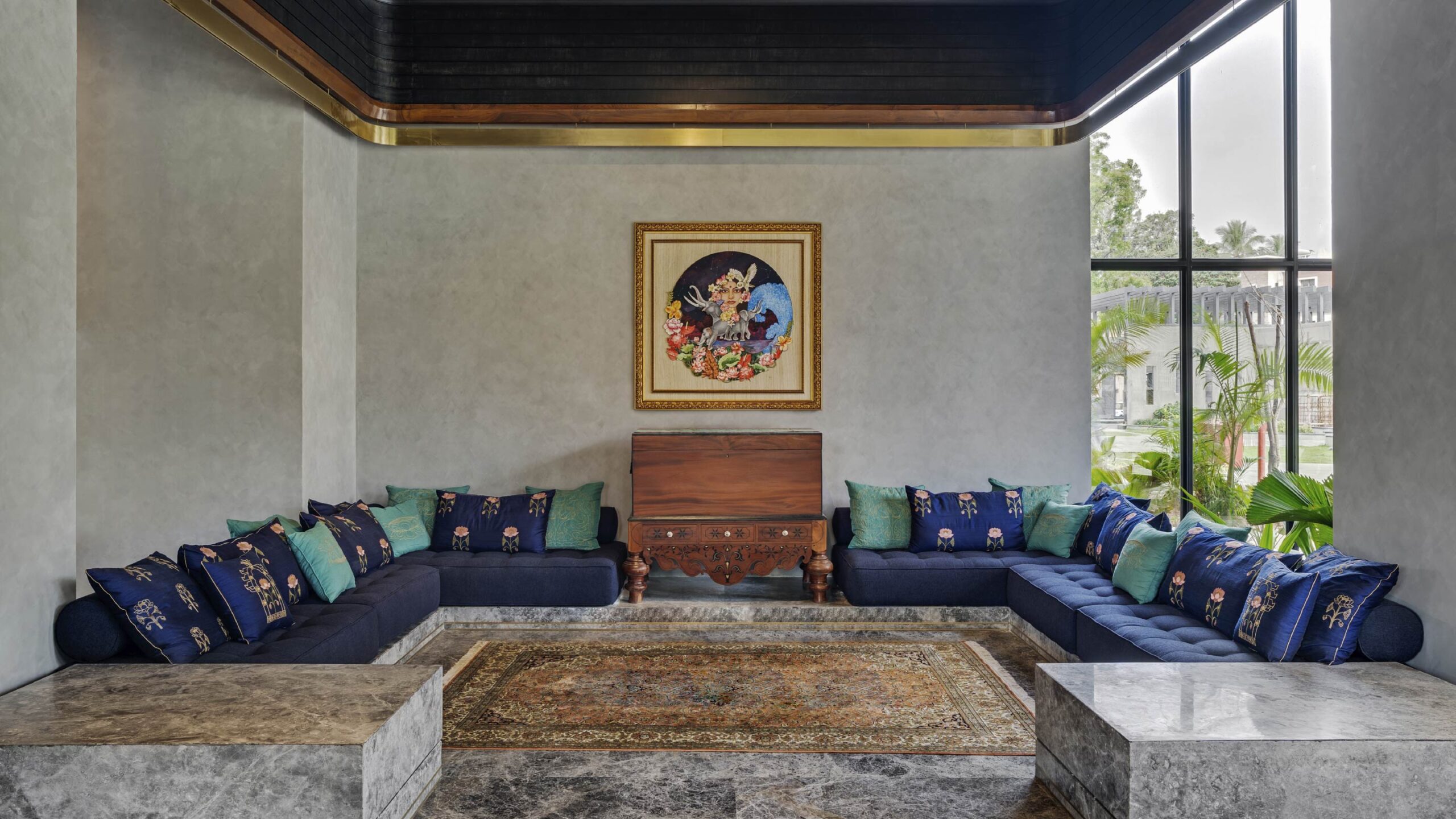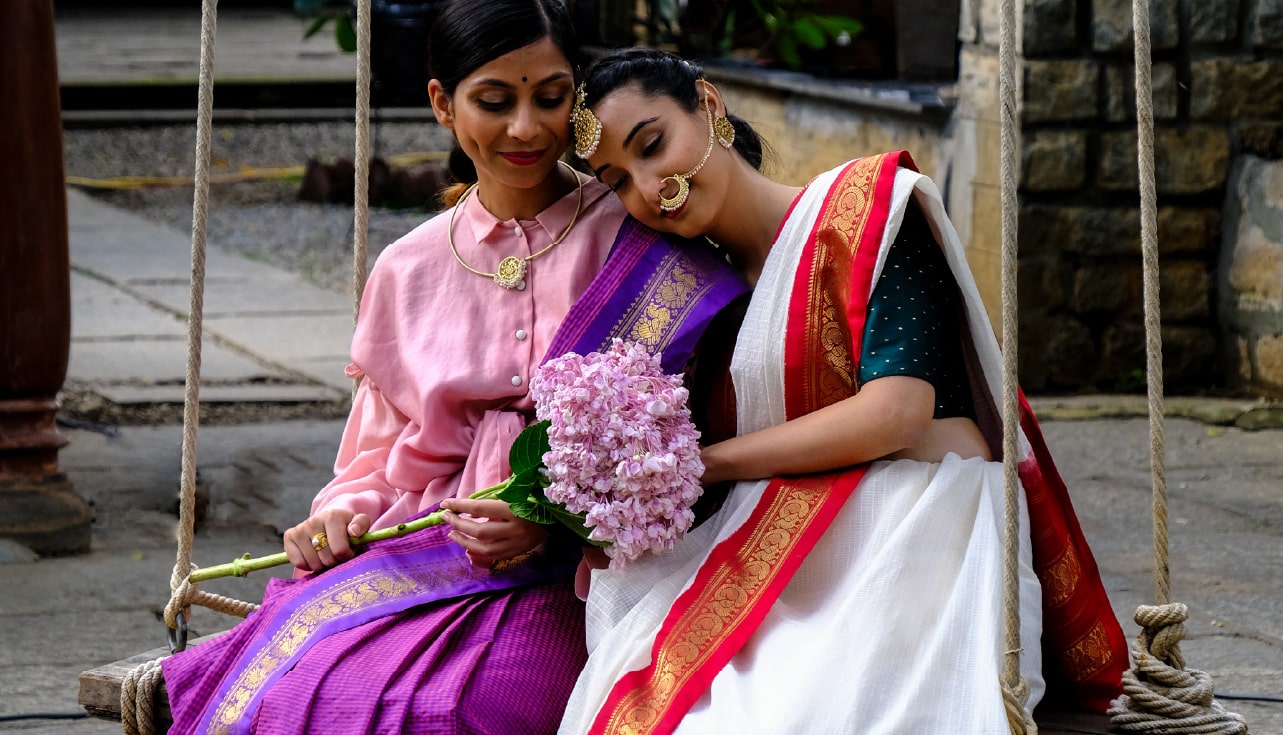Basavanagudi’s premier gated community creates immersive art and heritage experiences by embedding Indian iconography through paintings, installations, murals, carpets, antiques and inlay crafts into the contemporary work and leisure spaces at Svasa Homes
At first glance, the foyer, library, clubhouse and common areas at Svasa Homes have all the luxurious furnishings, décor and art that a well-planned modern living facility would feature. But what makes the spaces truly stand out is the design concept, one that is truly unique.

Here art infuses the interior design, seamlessly adding a rich cultural and historical context to 36,000 sq ft of luxe leisure and recreation space. Its hallmark ideology of ‘lifestyle enhanced by tradition’ makes Svasa Homes a harmoniously balanced community space.
The in-house art and design team at Svasa spent months putting together this innovative USP. We catch up with them to understand the entire art/heritage/design concept with its multiple layers and nuances better.
The Power of Three
“We began working with the Tridevi theme. The idea was to use different forms of art to channel the power of the three main goddesses in the Hindu pantheon through design and utility. The brainchild of our resident art expert Hima Reddy, it became the cornerstone of our design plan and we are very pleased with the way it turned out,” says Shishira Prasad, one of the artists responsible for the interpretation and execution of the goddess theme in general.
Explaining in more detail how the Tridevi concept became the leitmotif at Svasa Homes, Hima Reddy explains, “Basically we were trying to incorporate the eight aspects of the “Wheel of Life’ into an everyday holistic living approach for the residents of Svasa Homes.”
Prasad describes the creative underpinnings of her two multimedia paintings depicting Goddess Lakshmi’s avatars, Vijayalakshmi and Dhairyalakshmi, that occupy pride of place in the main lounge areas. The paintings are clearly unusual. Instead of using the typical format of the seated goddesses on a lotus, Prasad portrayed them in a non-traditional way, yet made it a point to incorporate the symbols traditionally associated with them, like the owl, the lotus, the weaponry and the pastoral landscape although in a more minimalist, abstract form. She added actual silk fabric and ornaments to give the paintings a surreal, three-dimensional effect and used soft, pastels and filtered lighting to complete the picture.
Passionate about the art she has especially created for this space, she points out how the interiors of the lounge pick up design details like the subtle peacock, elephant, and parrot motifs, traditional metalwork and jewelled embellishments. The theme carries through in the soft furnishings, the walls, the inlay flooring design and carved woodwork. “We framed the paintings and mounted them but we didn’t cover them with protective glass. We felt that the ‘touch and feel’ possibility made them even more appealing visually,” she adds.
The Big Picture
The clubhouse, or Commonhouse, as they prefer to call it, is broadly divided into three areas and uses the different avatars of Lakshmi, Saraswati and Parvati to pay homage to Indian heritage and culture through design.
“Lakshmi represents luxury so she makes her presence felt in the Sattva lounge. This is a space for families to hang out. It is luxurious yet comfortable, and you cannot miss my colleague Sushmita Goswami’s multi-layered digital and hand-painted work featuring Gajalakshmi. Sattva is perfect for entertaining friends or business associates and alongside Sattva, we have Karya, (derived from the Sanskrit word for work), which is a dedicated business lounge for more serious business meetings and discussions. Karya offers a private meeting room, conference room, discussion tables, and co-working spaces.”

When the design team started planning The Bodhi Library, naturally, Saraswati the goddess of knowledge was the perfect fit – and here Dipinder Kohli’s stunning mixed media on canvas completes the space perfectly. The library houses over 2,000 carefully selected books and little touches like lotus motifs and veenas on display add to the atmosphere. However, Saraswati, without the energies of Lakshmi and Parvati to complement her, seemed somehow incomplete, says Prasad, elaborating on how the Tridevi concept organically evolved and came into play through all the shared living spaces.
The activity part of the clubhouse has a Parvati theme, as she represents nature and all things that nurture, explains Prasad. The Krida Lounge for community activities combines the energies of Parvati and Durga: power and grace in perfect harmony with each other. The Asana yoga studio for younger children is juxtaposed with a mezzanine floor which allows parents to relax while keeping an eye on their offspring.
Prasad makes a special mention of the softer, more nurturing side of the goddess that is reflected here.
“People don’t know that we have drawn inspiration for our sweeping murals from the fascinating Brihadisvara Temple built by Raja Raja Chola over a thousand years ago. We commissioned an eight-member team from Kerala to execute the work and the results as you enter the foyer are truly astonishing.

It’s not commonplace in most residential communities to be met with a 100-foot high, hand-painted art extravaganza as you enter. This particular work took a team of six painters over four months to complete. We wanted to give our residents an immersive art experience. We also wanted kids to learn to appreciate Indian art and heritage by being surrounded by it. Their natural curiosity will lead them to delve into the stories from Indian mythology depicted in the murals. And that itself will be a great learning exercise,” she points out.
Mehirr Nath Choppra, VP of Sales, Marketing and Customer Experience at Svasa Homes could not agree more. He says, “The charm of Indian myths and Indian art lies partly in the fact that they gently suggest rather than overtly state their core beliefs. In fact, Indian symbols of art are intrinsically tied into our philosophy and mythology. So in a general way, we can describe our Svasa design philosophy as a modern interpretation of our theology and tradition.”



